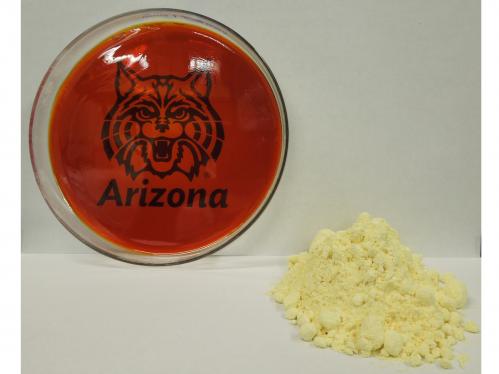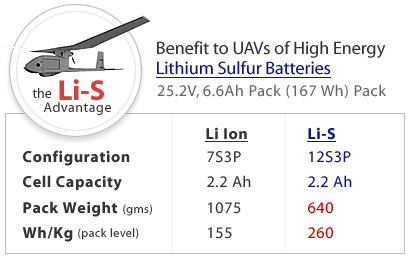Waste sulfur, seen below in the image of an Athabaska oil sands production site, is being transformed into lightweight plastic for use in electric batteries. The research into a new chemical process has been headed up by University of Arizona and involves contributions from Seoul National University in Korea, University of Delaware, and University of Hamburg. The plastic created is used to manufacture lithium-sulfur (Li-S) batteries suitable for use in electric vehicles and ultralight airborne reconnaissance robotic drones.
This international patent pending process uses sulfur left over from the refining of fossil fuels like the oil sands. Typically the sulfur extraction process involved yields less than a quarter kilogram (half a pound) of sulfur for every 72 liters (19 gallons) of gasoline. But when you factor in the millions of barrels of oil being refined each day you get a lot of sulfur. Although there are industrial uses for the sulfur there are not enough to get rid of mountains of yellow waste.
Using waste sulfur was a key objective for the research team. One that uses some of the sulphur from waste is vulcanization, a process that involves adding a small amount of sulfur to make synthesized rubber. In the case of the process from University of Arizona, the researchers use liquid sulfur with a chemical agent additive that turns the waste product into a usable polymer. The researchers have dubbed this process aptly as reverse vulcanization.
In the picture below you can see a petri dish on the left containing the liquid polymer plastic created from waste sulfur seen on the right. The plastic created from the sulfur performs very well in the Li-S batteries exhibiting high specific capacity and good retention over multiple discharges.
Already several companies have expressed interest in commercializing the technology. Li-S batteries are lighter than current lithium-ion batteries used in electric and hybrid vehicles today making them an attractive option for the transportation industry to consider. And these Li-S batteries are even lighter than any others on the market making them attractive for small form factors like airborne drones. A comparison chart shows the distinct advantages of Li-S over Lithium-Ion for such applications. Note how much lighter Li-S is than the lithium-iron batteries with which we are more familiar.
The research team continues to work on their discovery looking at other chemicals to see if they can improve on their formula. One field of interest is photonics looking at the polymer for its transmission properties and for light emitting diodes.











